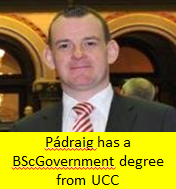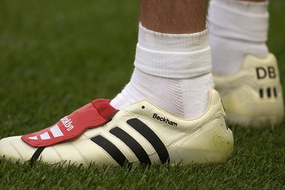
With the FIFA World Cup in Brazil well underway, over recent weeks television advertisements have been commandeered by various players endorsing a product or service. Using soccer luminaries, or more accurately, their image, to promote products is big business, especially during major tournaments; such as the FIFA World Cup and UEFA European Championships. For those of us of a certain vintage, we can still remember Kevin Moran extolling the virtues of using the Irish Permanent’s ‘bureau de change’ service, to convert Irish Punts into Italian Lira before leaving home to follow the boys in green around Italy in 1990.The Adidas and Nike adverts in the run up to the big tournaments always stimulate interest as to who will devise the more exciting, captivating and adventurous advertisement; featuring the galaxy of stars signed to each company’s respective marketing stable. This practice has become more pervasive over the last twenty years, which begs the question; what do you give the global soccer superstar who has vast amounts of money in return for using his image? The answer, unsurprisingly enough, is in fact, more money.
To understand the phenomenon a little better, perhaps we should reflect briefly on the history of image rights in football. From the early to mid-1990s, sponsorship deals in English football were moving into multi-million pound territory.

This newly acquired stardom and earning potential did not go unnoticed amongst the non-English based players either. In the 1992/1993 season, in the opening round of matches, only eleven players named in all clubs starting line-ups were classified as ‘foreign’ (non-UK or IRE). This increased to 36 per cent of all players for the 2000/2001 season and increased again to 45 per cent for the 2004/2005 season. Historically, Arsenal was the first club to name an entire sixteen man squad of ‘foreign’ players for a game in February 2005. The Premier League was an attractive proposition for any overseas footballer, especially those who possessed a star quality, with the lure of the financial rewards and increasingly prevalent commercial opportunities the league presented. As a new wave of non-British player arrived to the Premier League, so too did the business savvy players’ agent and shrewd financial advisor.
In the early days of the Premier League, paying players was a relatively straight forward exercise. The player was paid a salary, on which he could expect to pay approximately 50 per cent income tax. As the advisors and agents became more involved in the negotiations, the remuneration package was essentially divided into two components; first the salary and second, a fee to allow the club to use the player’s image. The salary was, as before, directly taxable by Her Majesty’s Revenue Commissioners, however, the payment of the fee for the ‘image rights’ was more complex. This could be paid into an off shore company and thus avoid the high rate of income tax. Instead, this amount would be assessable under a corporate tax structure, which was often half the rate of income tax for high earners. The case which stands out in this regard is that of Dennis Bergkamp. The Arsenal player was paid in total, £3.5 million a year by the club, £2 million in salary and £1.5 million by way of ‘image rights’. The ratio of pay to image rights raised eyebrows in the headquarters of the Inland Revenue who challenged the arrangement on grounds of tax avoidance, but in the end, following an investigation by a special commission, Bergkamp won out. The commission deemed the structuring of the ‘image rights’ payment, a legitimate commercial contract. A precedent was set. However, the Bergkamp deal was small change in the overall scheme of things for what was to come in terms of players cashing in on their ‘image rights’, both in terms of contracts and off the field endorsements. This will be discussed in a further post on this blog.
 RSS Feed
RSS Feed